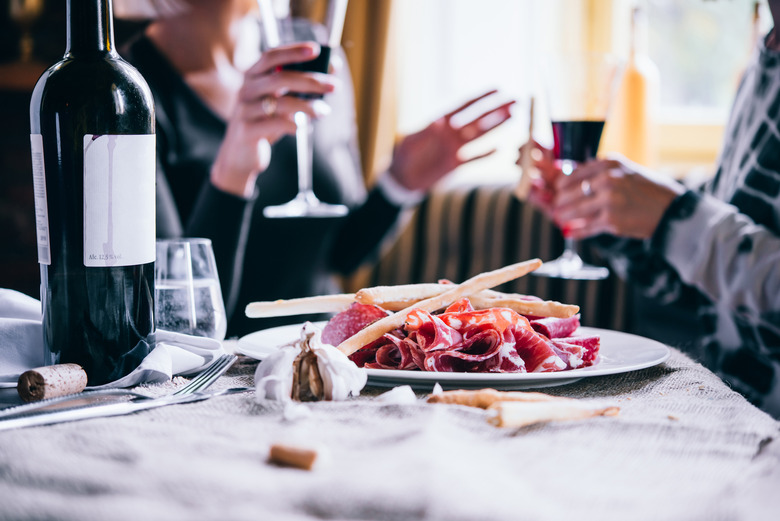What Is Lardo, The Latest Trend In Fatty Food?
Move over, avocados. Lardo is the new "good fat" in town, and it's here to stay — at least, until hipsters find another fatty food to glom onto. In the next step of the healthy fat movement, lardo is making its way onto trend-setting menus and expensive plates across the country.
But what is lardo? Despite what Urban Dictionary will tell you, it's not a schoolyard insult.
It also isn't lard, though it's understandably mistaken for it often. Lardo is similar to lard in that it's made from pig fat, but far fancier than rendered chunks of abdominal fat, lardo is created by curing strips of fatback with various herbs and spices. Fatback comes from beneath the spine of a pig and is generally considered a delicacy. Once you cure the meat and season it carefully, the greasy slices become even more special.
In Italy, lardo is a treasured piece of heritage. Italians love their fat, and certain types of lardo are more prized than others. Lardo di Colonnatta, for instance, is the most coveted cut thanks to the climate of the Colonnatta region — perfect wind speeds for aging pig fat. The production of Lardo di Colonnata is even regulated by IGP (Indicazione Geografica Protetta) standards, which dictate that the meat must be aged in marble.
It's a surprisingly refined taste for a food trend. After all, unicorn toast didn't have to live up to longstanding traditional standards to get served in a hipster café. But the greasy fine food is making its way onto all kinds of trendy menus.
Casual, hip restaurants started using it: Farm Burger in Atlanta allows guests to choose it from their unique selection of burger toppings, and B.S. Taqueria in Los Angeles serves Clam and Lardo Tacos on their ever-changing menu of "authentically inauthentic fare." The Brewer's Table, a farm-to-table, craft-beer-selling, high-end eatery in Austin, serves Swordfish Belly Lardo as an appetizer.
You'll even find lardo on the menu at the New York location of Dominique Ansel Bakery, the hipster-attracting restaurant responsible for items like the avocado chocolate egg and Oreo cookie spread. Dominique Ansel Bakery melts a layer of lardo on top of their Little Piggy Muffin.
Honestly, what wouldn't taste better coated in a layer of fat? Trends of years past have leaned sharply towards low-calorie and fat-free foods, featuring diet ice creams and "skinny" lattes. But lately, eating more fat has been all the rage.
This change of heart is (surprisingly) good for your heart. While previous recommendations warned Americans away from eating animal fat, largely due to a suspected connection between cholesterol and heart disease, newer studies have suggested that a moderate intake of animal fats could be beneficial.
Saturated fats can actually increase levels of "good" cholesterol, or HDL cholesterol, according to some studies. You want that; studies show that HDL cholesterol can lower your risk of heart disease.
More good news for your cholesterol (and your taste buds): There are studies that suggest saturated fat, like the kind found in egg yolks, coconut oil, and (of course) lardo, can transform more harmful forms of LDL, or "bad" cholesterol, to less harmful forms of LDL cholesterol. In other words, lardo can reduce the risk your "bad" cholesterol poses to your health.
So go ahead and eat lardo. These are just one of the many reasons you should eat more fat to be healthy, not less.
